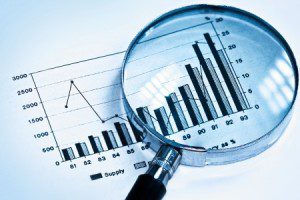 Businesses today are a part of a highly complex supply chain involving multiple suppliers and vendors located at different places across the world.
Businesses today are a part of a highly complex supply chain involving multiple suppliers and vendors located at different places across the world.
SubmitWhen a disruption or bottleneck occurs in any part of the chain, it is often impossible to identify the culprit without a complete supply chain analysis. Without identifying the source and cause of the problem, it is not easy to achieve targeted sales and growth.
Supply chain analysis is the process of evaluating every stage of a supply chain starting from the time the business acquires raw materials or supplies from its suppliers to the delivery of final products to the customers. The purpose of the analysis is to determine which part of the supply chain can be improved or shortened to deliver the product more quickly and efficiently to the customers. The philosophy behind supply chain analysis is that the more flexible a business can be, the faster its growth rate will be.
Supply chain analysis helps businesses identify the suppliers and/or processes that can be bypassed, reduce inventories, schedule events and programs, and improve forecasts. This increases efficiency, reduces costs and minimizes risks. It helps businesses optimize their processes to remove redundancies in the supply chain while helping create new value-added processes.
Conducting a supply chain analysis involves the following steps:
1. Mapping the Supply Chain:
This involves identifying all the organizations, people, activities, information and resources involved in the supply chain and creating a flowchart to obtain an overview of the chain, the flow of raw materials and product, the position and function of chain actors and the type of interaction between the actors.
2. Developing Economic Accounts Corresponding to Each Actor Involved in the Supply Chain:
This involves quantifying the activities of each actor and contribution to the flow of materials both in physical and monetary terms. It helps the analyst assess the importance of the actor in the chain and to point out where the weaknesses lie and how they can be rectified.
To start a complete supply chain analysis, you need to collect data pertaining to every actor and every stage of the supply chain. This requires a lot of research and hard work. Most small and midsize businesses rely on manual methods of data collection and the use of spreadsheets, such as Microsoft Excel, for analysis.
A faster and easier way to conduct the analysis is to use a software program to automate the process. Such a program can extract information from all the different sources into one console removing the need for tedious and time consuming manual data collection. You can analyze shipping schedules, improve transportation and inventory planning, increase transportation management efficiency and track just-in-time delivery metrics.
Some top of the line software programs for supply chain analysis have advanced and useful features like data blending and cross-data source triggers, built-in geocoding, built-in calculation support, connectivity to external web services and support for WMS mapping services. The programs require considerable investment, but the saving on time, efficiency and accuracy amply compensates for that.


